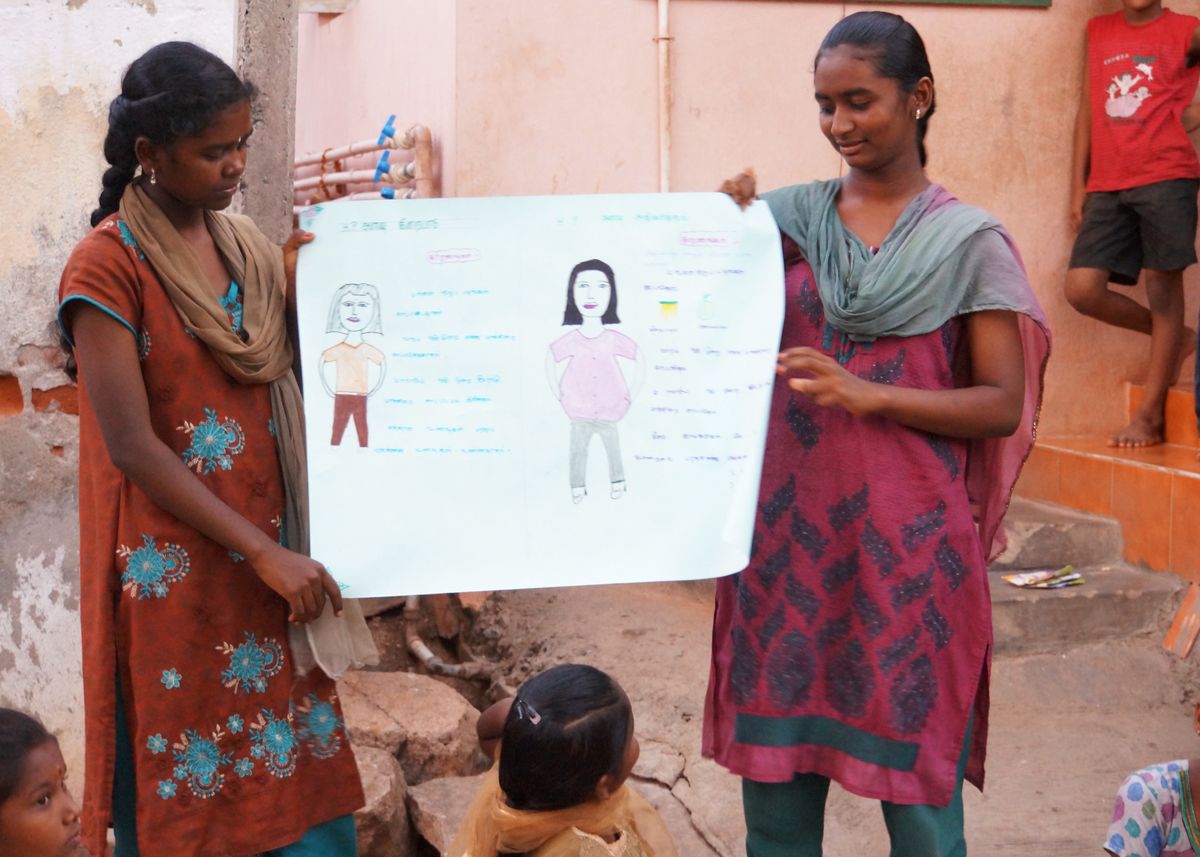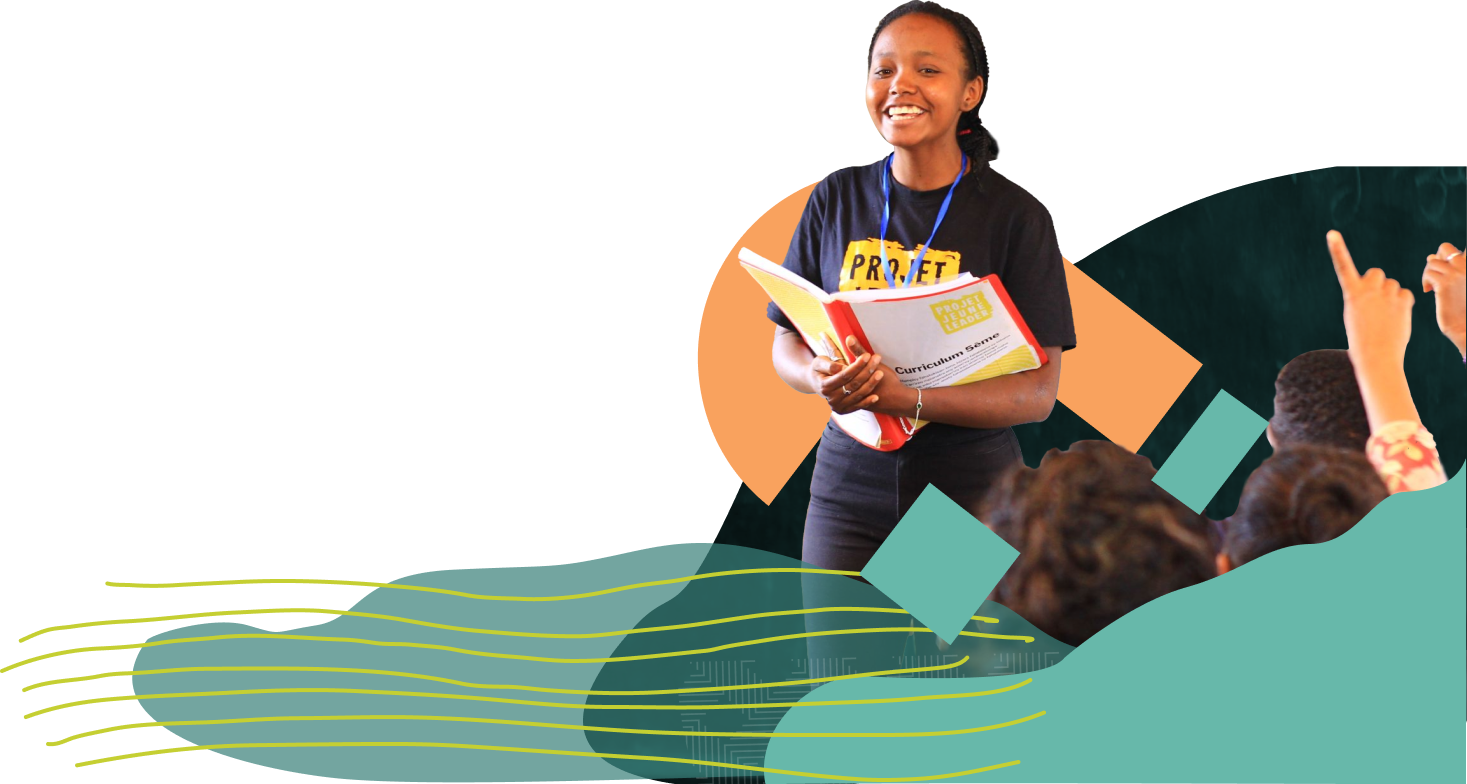Transforming Strong Girls into Strong Women

For many students in the United States, back-to-school means not just back to books and homework, but also back to sports, clubs, and other extracurricular activities that enrich their growth, development, and enjoyment of school. However, for girls in Ghana, Kenya, India, and Haiti, where WomenStrong International Consortium members work, opportunities for additional learning, support, and growth are rare.
That’s why, when our Consortium members began Girls’ Clubs in their own communities, girls jumped at the chance to join. Girls’ Clubs provide their adolescent members with vital information regarding their personal development that helps them cope with difficult environments filled with roadblocks. The Clubs are held in safe spaces in places where safety cannot be taken for granted.
Our Clubs offer a chance for girls to bond with each other and to form new friendships that can support them as they face their challenges. They are a place to learn about how to build and maintain relationships. The warm and encouraging environments cultivated by each Club increases girls’ self-esteem. It is encouraging to see how the Clubs have led to more girls taking on leadership roles in other parts of their lives, in their communities and their schools. For girls who have dropped out of school, these Clubs are even more important, and may be the only source of support they have.
Building Confidence to Stay in School
“Members of WHW’s Girls’ Club in Kumasi, Ghana”
Women’s Health to Wealth (WHW) Executive Director Abenaa Akuamoa-Boateng saw the need for Girls’ Clubs when she learned how few girls were advancing to Senior High School. In addition to challenges of money and menstruation (as WomenStrong has highlighted over the last few months of our “Empower the Period” campaign), many girls were considering dropping out because of bullying and harassment at school by boys and even teachers. Ridicule, contempt, mockery, and insults, repeated often enough, led some girls to agree with their aggressors that they simply weren’t smart enough to learn. After feeling unsafe in school, dropping out often became the easier, safer path.
Faced with these challenges, WHW’s Girls’ Clubs offer motivation, support, and confidence-building. Clubs equip the girls with tools to combat challenges, such as communication skills, sexual and reproductive health education, and exercises to build self-esteem, showing the girls that staying in school helps make it possible for them to achieve their dreams.
Reflecting on her own experience, WHW’s Girls’ Club member Mary said, “I was pregnant, and I wasn’t going to come back to school. The teacher had me join the Girls’ Club, and I learned so much. I learned how to not get pregnant again, how to relate better with others, how to treat others with respect, and how to study.” Ultimately, Mary returned to school, adding, “The Girls’ Club makes me enjoy school and makes me eager to come to school.”
Improving Health Outcomes for Girls
In India, health is one of the biggest challenges facing girls’ education. Women and girls are usually last to eat at mealtime and may not get enough nutrients, resulting in shockingly high anemia rates. Over 85.5% of girls were anemic when they joined the DHAN Foundation’s Girls’ Club. As a result, DHAN’s Clubs made anemia screening and education a top priority, and every one of the nearly 8,000 girls who have joined the Clubs have been screened and treated as needed. The Clubs, run by the girls themselves, teach health and nutrition through games, songs, and dance, making the Clubs one of the girls’ favorite activities. Armed with this newfound knowledge, the girls have been able to help their families by sharing information on proper hygiene and balanced meals.
“Members of AVFP’s Girls’ Club in Kisumu, Kenya”
Following the rampant HIV/AIDS crisis in Kisumu, Kenya, Alice Visionary Foundation Project saw the importance of Clubs for vulnerable girls and boys. With the support of school principals and teachers, students facing the biggest challenges were invited to join the Club. Girls have learned to speak up and express themselves, improve their hygiene, and pursue their goals and dreams. The difference these Clubs have made for their members is clear—now, all the students, male and female, want to be part of AVFP’s Empowerment Clubs!
“Members of H.O.P.E.’s Girls’ Club in Borgne, Haiti”
H.O.P.E.’s Girls’ Clubs in Borgne, Haiti, also engage with vulnerable girls, including those who have dropped out of school. These Clubs are run by highly-trained peer mentors, so the girls can see that it is possible to become successful young women despite the hardships they face. These mentors provide the girls with information to help them protect themselves in vulnerable situations. The Clubs have become a much-needed resource for girls needing additional encouragement and support.
WomenStrong International’s Girls’ Clubs are clearly much more than an extracurricular activity for these girls. Such clubs have been called “protective assets” by human development experts, including those at the well-respected Population Council. These are essential resources that help protect low-income girls from the common pitfalls they often face in developing countries – pitfalls that can have lifelong impacts. The Clubs provide the knowledge, support, and community that the girls need to develop into strong women, capable of achieving their dreams, improving their communities, and transforming the societies in which they live.

